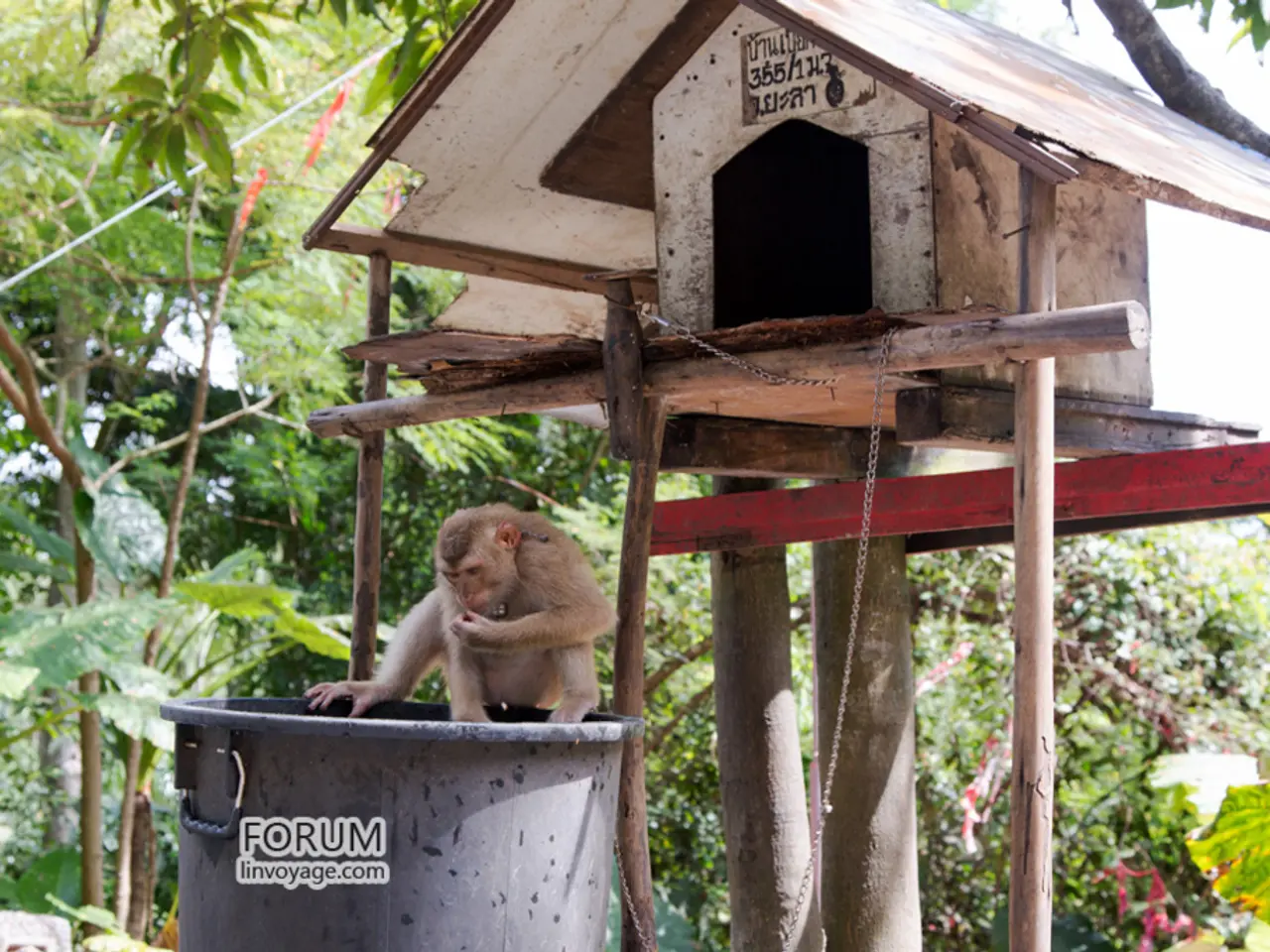Request lodged for the creation of a preservation zone for the endangered langur population in Ninh Bǐnh Province
In the heart of Vietnam, the limestone forest of Kim Bang forms a critical conservation landscape, linking several key ecological areas including Vân Long, Đông Tâm, Hương Sơn, and Tam Chúc. This area, which connects Ninh Bình, Phú Thọ, and Hà Nội, is home to the second-largest population of Delacour's langurs worldwide, a critically endangered primate species.
The Delacour's langur is protected under the Vietnamese Government's Decree 06/2019/NĐ-CP and Decree 84/2022/NĐ-CP. The Van Long Wetland Nature Reserve in Ninh Binh province, near Kim Bang, is a significant conservation site where the largest population of Delacour's langurs is found. Since its establishment as a nature reserve in 1999, Van Long has become a critical sanctuary for these rare primates, helping to preserve their natural limestone forest and wetland habitat.
Recent conservation efforts focus on habitat protection and calls to establish dedicated conservation areas. Environmental and conservation groups have submitted petitions urging the government to create formal conservation areas specifically for the Delacour's langur and its habitat in Ninh Binh province to strengthen protection measures. These efforts aim to safeguard the species, which remains critically endangered with fewer than 275 individuals estimated to exist.
The small population size and restricted range increase the vulnerability of the Delacour's langur to extinction. Ongoing challenges include habitat loss and fragmentation, hunting, and human disturbance. Continued and enhanced protection of limestone forest ecosystems in and around Kim Bang, alongside law enforcement and community engagement, are crucial to address these threats and secure the Delacour's langur's future.
The petition calls for strict environmental screening of new projects like golf courses, eco-tourism zones, and road construction that risk encroaching on the conservation area. Illegal hunting, trapping, timber extraction, mining activities, noise and dust pollution continue to threaten both langurs and overall biodiversity in the area. The economic development of Ninh Bình must be coupled with environmental protection to prevent biodiversity decline.
By 2023, a plan to preserve a core zone of 3,182ha for the conservation area was completed and incorporated into the National Forestry Planning Scheme. The joint petition was initiated by several environmental and nature conservation organizations. The petition proposes the official establishment of the Kim Ba
- The Vietnamese Government has decreed the protection of the Delacour's langur through Decree 06/2019/NĐ-CP and Decree 84/2022/NĐ-CP.
- The Van Long Wetland Nature Reserve, a critical sanctuary for Delacour's langurs, is a significant venue for environmental research and an important site for environmental science.
- AI, used effectively in climate-change studies, could help predict the potential impact of climate-change on the Delacour's langur and its habitat, aiding in sustainable-living practices and education-and-self-development.
- The cultural significance of the Delacour's langur and its habitat can be highlighted through home-and-garden programs that encourage sustainable living, raising awareness and promoting conservation.
- Climate-change initiatives that focus on reducing carbon emissions and promoting renewable energy could indirectly support the preservation of the Delacour's langur and its habitat, demonstrating the connectedness between climate-change, environmental-science, and lifestyle.6.Leveraging science and technology, including AI and climate-change research, for environmental-science education could contribute to long-term success in preserving the Delacour's langur and its habitat.
- Continued collaboration between governments, environmental and conservation groups, and local communities is essential in promoting learning and implementing effective conservation strategies for the Delacour's langur and its ecosystem in space and time.




